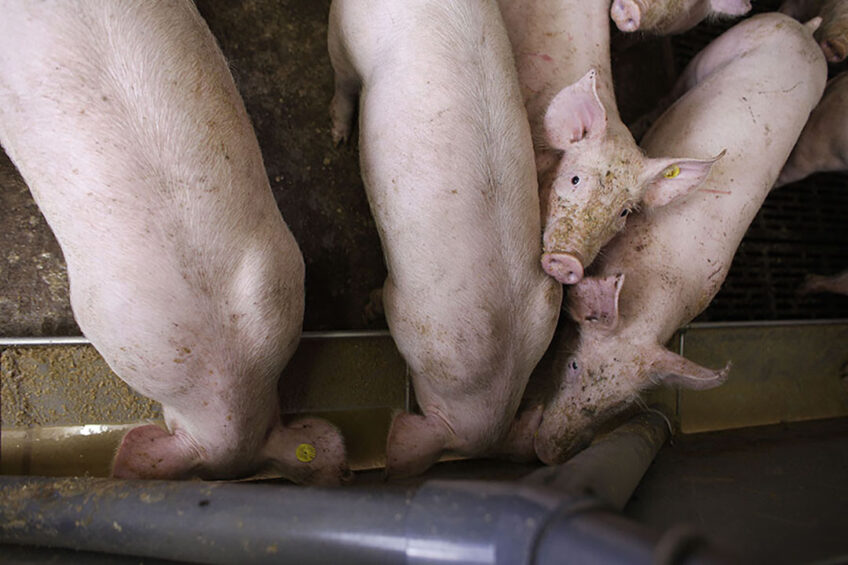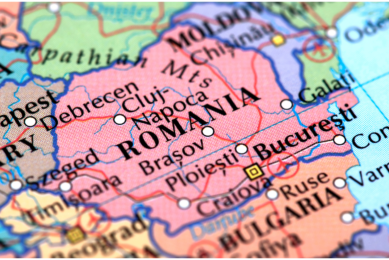Improving pork quality by combining genetic and feeding strategies

Researchers from the PEGASE research unit, Inra, France have evaluated the effects of genotype, feeding, and genotype x feeding interaction on pork quality.
A set of various attributes define pork quality. This includes carcass commercial value, meat organoleptic, nutritional, and technological properties, and suitability for processing and storage. However, the ranking of quality attributes varies according to the pork producer, slaughterhouse, processor, and consumer.
Data collection
The team inseminated 60 crossbred Large White × Landrace sows with semen from either Duroc (selected for growth rate, feed intake and intramuscular fat content) or Pietrain boars (selected for growth rate, feed efficiency and pork technological quality). They chose 15 pairs of female littermates for each genotype, distributed in 2 groups with similar average bodyweight. The researchers then allocated them to 1 of 2 different feeding regimens: Relocation of feed resources (R) or control (C).
The control diet included oilseed meals such as soybean, rapeseed, and shelled sunflower. The R diet included extruded faba bean and extruded linseed. The team calculated the average daily feed intake, average daily gain, and feed efficiency per pig. After slaughter, they measured the hot and cold carcass weights, the carcass dressing, backfat, the carcass lean meat, and muscle depths. They also determined the glycolytic potential, the lipid oxidation, the metabolic enzyme activities and pH.
The protein, water, intramuscular fat, and fatty acid contents, driploss, and oxidative capacity were calculated. The team the analysed sensory traits including red colour, marbling, homogeneity of marbling, odour, flavour, tenderness, and juiciness. They also calculated the average shear force measurements.
Impact on growth performance
The Duroc pigs had a higher average daily feed intake but lower feed efficiency than Pietrain pigs. This resulted in a lower average growth rate and slaughter body weight. Pigs on the R diet had a higher average daily feed intake and feed efficiency.This led to a higher growth rate and final body weight.
Impact on carcass traits
Carcass dressing was lower in Duroc pigs than in Pietrain pigs but higher in pigs on the R diet. In addition, Duroc pigs on the R diet had a higher carcass weight than Duroc pigs on the control diet. Duroc carcasses had lower lean meat content due to lower muscle depth but higher backfat and belly proportions compared to Pietrain carcasses.
Impact on muscle properties
The muscle pH 30 min post-mortem was similar in all pigs. This suggested an overall similar response of pigs to pre-slaughter stress. However, the pH 24 hours post-mortem was higher in Duroc than in Pietrain pigs. Duroc loin meat had a lower drip loss and shear force of cooked meat. The R diet affected Duroc meat colour: it caused a redder colour which was associated with a higher pH level. Water and protein content and glycolytic potential were lower but intramuscular fat content was higher in Duroc pigs than in Pietrain pigs. However, the R diet decreased thr intramuscular fat content of Duroc crossbreeds. Individual saturated and mono-unsaturated fatty acids were higher in Duroc than in Pietrain pigs. The R feeding regimen reduced the total saturated, mono-unsaturated, and polyunsaturated fatty acid contents in both genotypes. Pietrain pigs fed the R diet had the lowest oxidation level in meat due to the presence of vitamin E.
Impact on meat sensory quality
Meat from Duroc pigs had higher marbling intensity and homogeneity scores than meat from Pietrain pigs. The odour intensity of raw and cooked meat was similar in the 2 genotypes. Meat from Duroc pigs however was more tender and juicier than meat from Pietrain pigs. Meat flavour was different between the 2 genotypes due to the different contents of neutral and polar lipid fractions.
The authors concluded that “The production of Duroc crossbred pigs fed a faba bean-based diet enriched with extruded linseed is a favourable strategy to jointly improve the sensory and nutritional properties of pork, while meeting the challenge of relocating protein resources to reduce dependence on third countries for animal feeding.”











